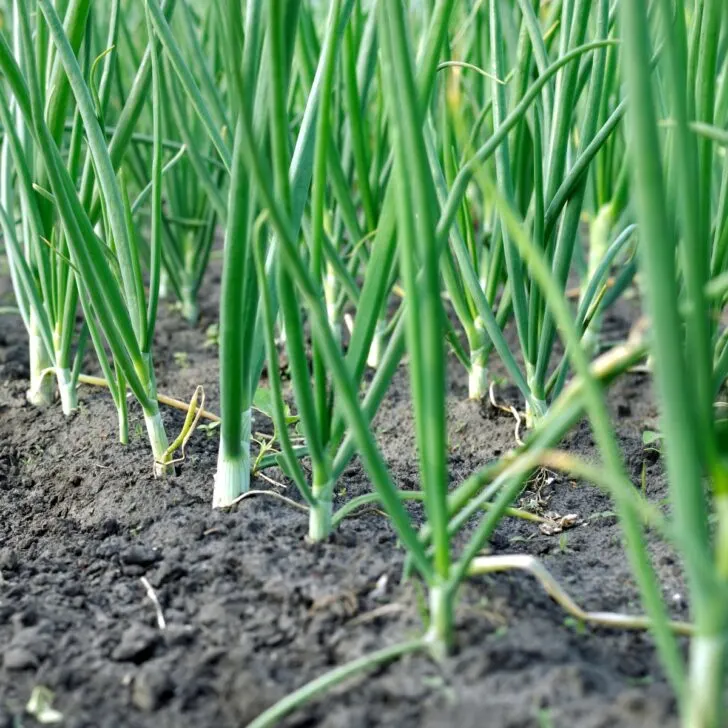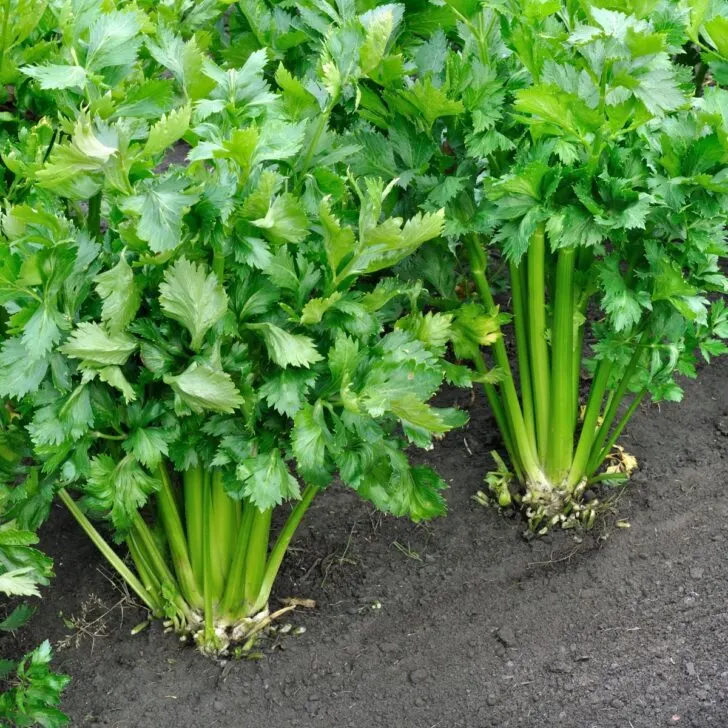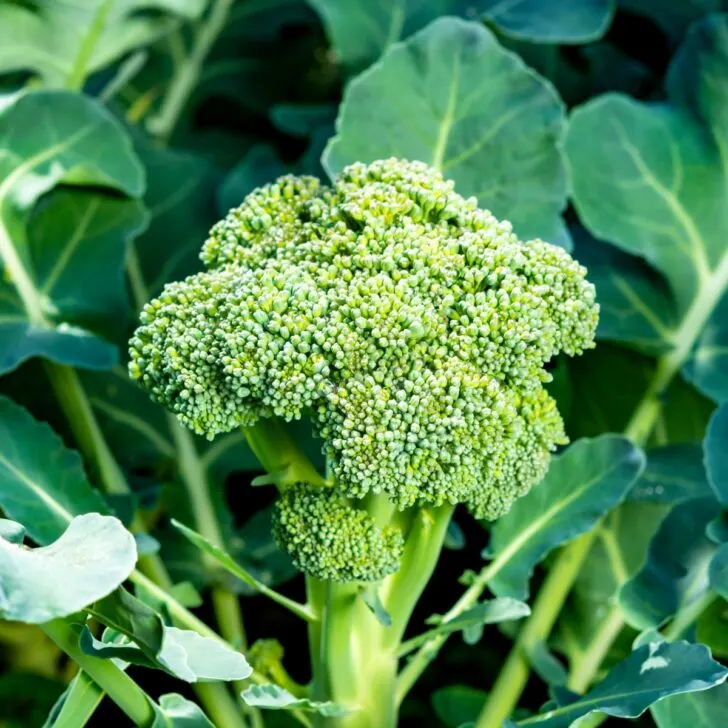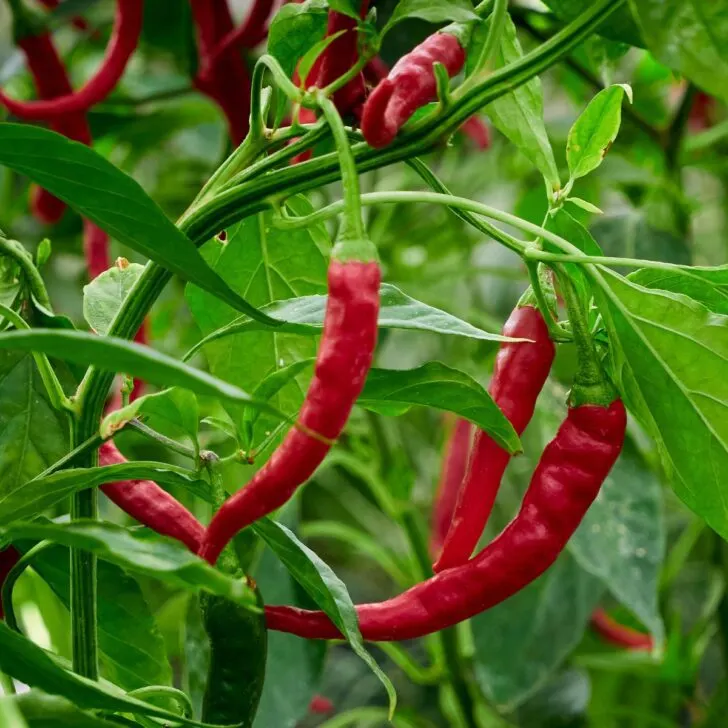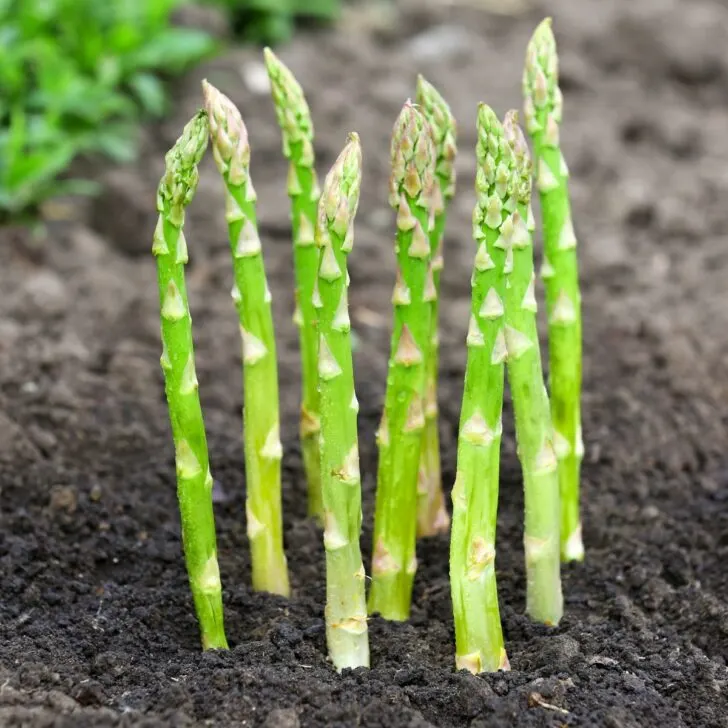Learn how to grow cantaloupe from seed and harvest fresh, juicy fruit from your own garden all summer long!
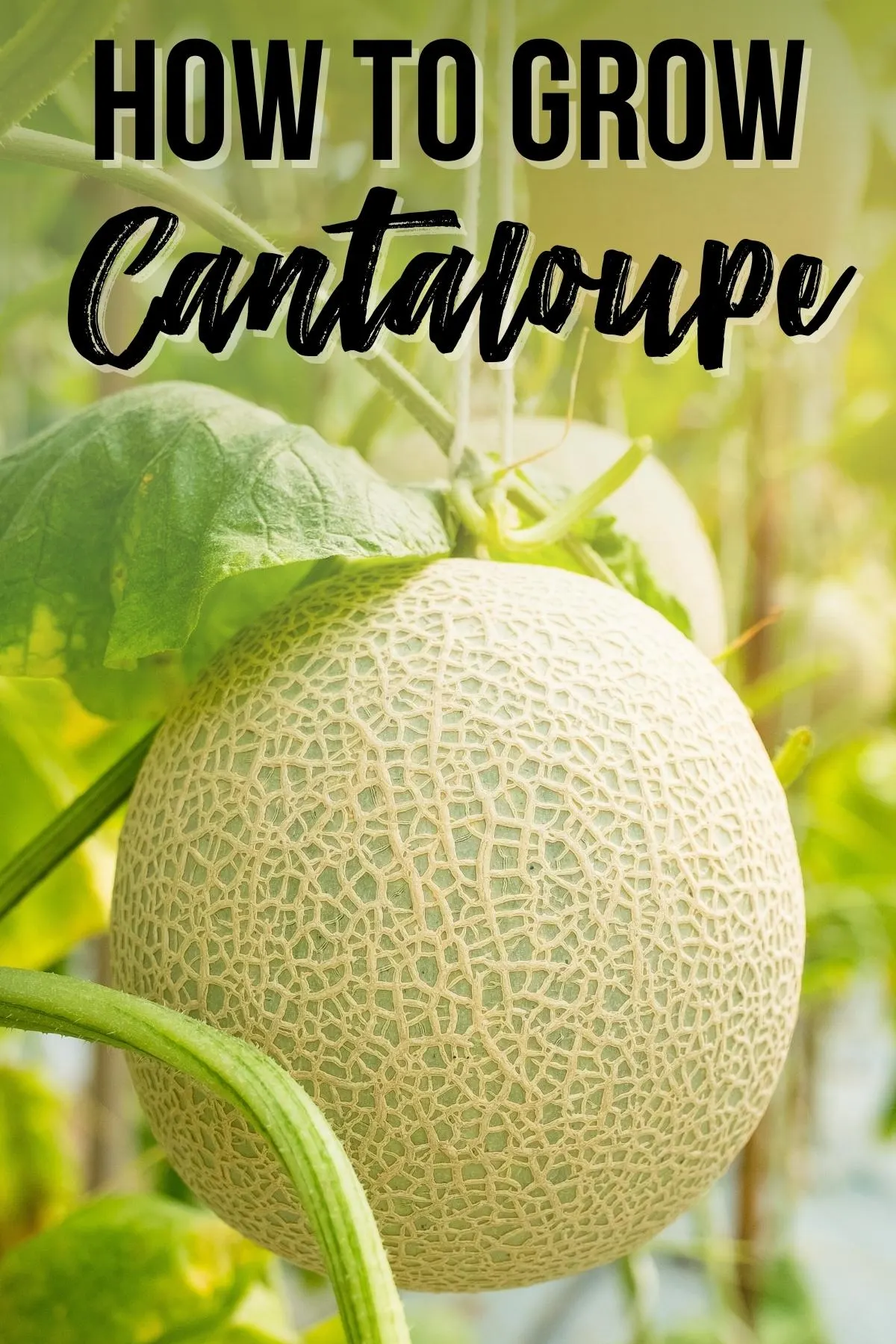
There's nothing better than biting into a slice of sweet, juicy cantaloupe, and it's even better when it was picked fresh from your own garden! Believe it or not, cantaloupe is easy to grow from seed, although you'll need plenty of space for the vine to spread out.
Unlike many fruit trees that take years to mature, cantaloupe is a tender annual plant that produces delicious and nutritious melons about 85 days after transplanting.
Cantaloupe is a warm weather crop that thrives when daytime temperatures are in the 70s and 80°F. It needs full sun, fertile soil, and lots of water, and they are prone to a few pests and diseases like powdery mildew and cucumber beetles. But, with some care, they quickly reward your efforts with sweet, fragrant melons.
Let's get growing!
This post contains affiliate links for your convenience. Purchases made through these links may earn me a small commission at no additional cost to you.
Cantaloupe Varieties
Cantaloupes come from two species, Cucumis melo reticulatus, or North American cantaloupe, and Cucumis melo cantalupensis, European cantaloupe. Both are closely related to cucumbers and squash and need similar growing conditions.
Some types are determinate, producing their entire crop in a short time, and others are indeterminate, with the harvest spread out over several weeks. Indeterminate varieties usually work better in home gardens.
If you want to save seeds from your cantaloupe to plant next season, look for open-pollinated or heirloom varieties. A few examples are:
- ‘Charentais’ is an open-pollinate heirloom with a salmon-colored interior and a tropical fruit sweetness.
- ‘Hearts of Gold’ grows plentiful, tasty, three pound fruits, ready in 80 to 90 days.
- ‘Hale's Best Jumbo’ is a reliable producer, with 6-inch diameter, flavorful melons.
- ‘El Gordo Hybrid’ grows whopper fruits weighing 15 pounds and up, with about three or four fruits per plant.
- ‘Green Nutmeg Melon’ is an old, green-fleshed variety.
How to Plant Cantaloupe Seeds
You can directly sow cantaloupe seeds in the ground or start them in flats and transplant them. When started indoors, they produce ripe melons about two weeks ahead of direct sown seeds.
Starting Cantaloupe Seeds Indoors
- Start the seeds about six weeks before you transplant, after the danger of frost.
- Sow two seeds about ¾ inches deep in small pots or in large cells in a seedling flat filled with damp seed starting mix.
- Keep the trays on a heat mat under natural or artificial light at 85 to 90°F until the seeds sprout, then lower the temperature to approximately 75°F and let them grow for about six weeks.
- Harden off the seedlings and transplant them, careful not to disturb the roots.
Direct Sowing Cantaloupe Seeds
Wait until the daytime soil temperature reaches 65°F. Make mounds of soil about 3-4 feet in diameter. Plant four to six seeds an inch or two apart and about 1 ½ inches deep across the top of the mound.
Keep the seeds watered, and when the seedlings come up, thin to the best two plants per mound.
Planting Cantaloupe in the Garden
Give cantaloupes the sunniest spot possible, but be sure the soil drains readily or amend it with compost or aged manure to achieve better drainage. Take a soil test to determine fertilizer needs and apply 5-10-10 fertilizer as needed.
Plant melons 18 to 24 inches apart in rows with a minimum of 6 feet between rows. The vines will spread over the area fairly quickly, so make sure there's enough space!

You can plant in a plastic mulch for warmer soil, moisture retention, weed suppression, and less fruit rot. To do this, incorporate any needed fertilizer into the ground, install drip irrigation, and then cover the row with black plastic. Cut holes every two feet to transplant or direct sow the seeds.
Row covers or tunnels can be highly beneficial for growing cantaloupes in cooler growing regions to get an earlier start on planting. However, remove them when temperatures under the covers reach 80°F to allow insects to pollinate the flowers.

Caring for Cantaloupe Plants
Watering
Cantaloupes need regular, deep watering of one to two inches per week, with the soil getting damp down to six inches. Drip irrigation is best because overhead water can encourage mildew and damage fruit. Cut back on water about one week before maturity to improve flavor.
Fertilizer
Lightly side-dress the plants with a high-nitrogen fertilizer a few weeks after planting and again just after the flowers bloom. However, be careful not to overdo it because too much nitrogen can lead to excessive leaf growth and poor fruit harvest.
If you use an organic mulch like grass clippings instead of plastic mulch, wait to apply it until the soil is 75°F, or it can reduce growth by keeping the ground cool. Plastic mulches have the opposite effect of warming the earth.
Pests and Disease
Cantaloupes can be prone to blossom end rot if the soil does not contain sufficient calcium or watering is irregular. Control aphids and cucumber beetles when the plants are young, but these pests don’t damage larger fruits.
The best way to avoid diseases and pests in cantaloupes is to rotate the crop yearly. Do not grow it in the same spot as any other melons, cucumbers, or squash for three years.
Harvesting
Pick cantaloupes when the skin loses its greenish tint and turns a soft yellow, and the fruits slip easily from the vines when you touch them. Check for ripe fruits frequently because they do not last long after fully maturing.
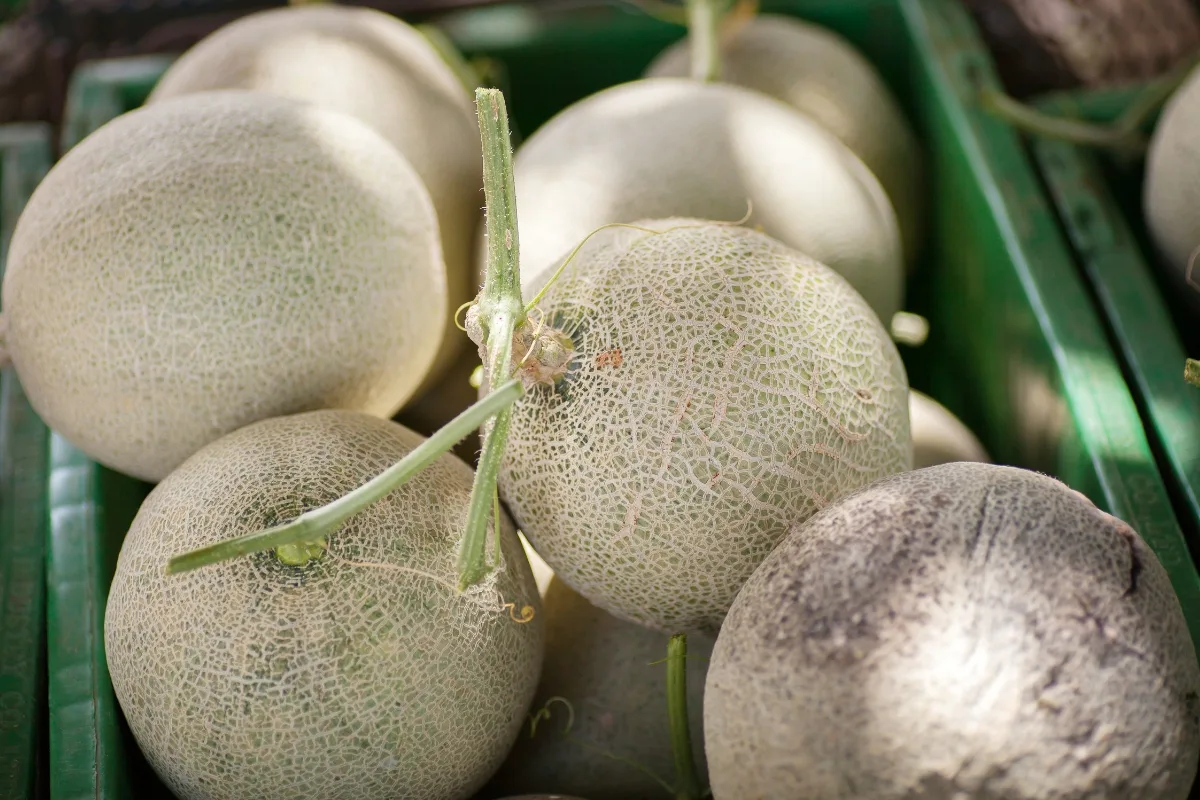
Growing cantaloupe from seed can be so rewarding, with sweet, juicy fruit that you can pick straight from the vine! Have you ever grown cantaloupe in your garden? I'd love to hear about your experience in the comments below!
Check out these other edible plants you can grow from seed!

